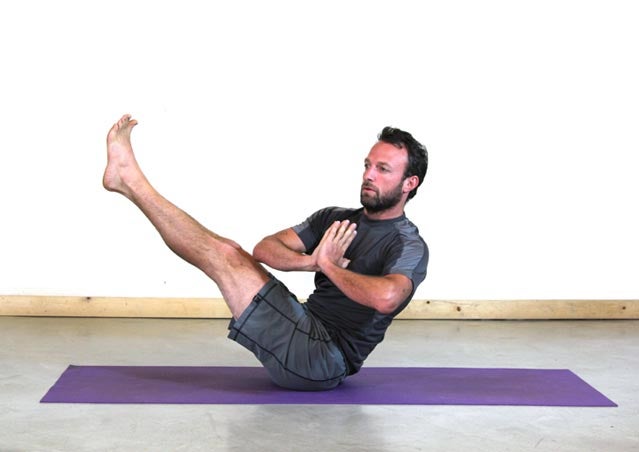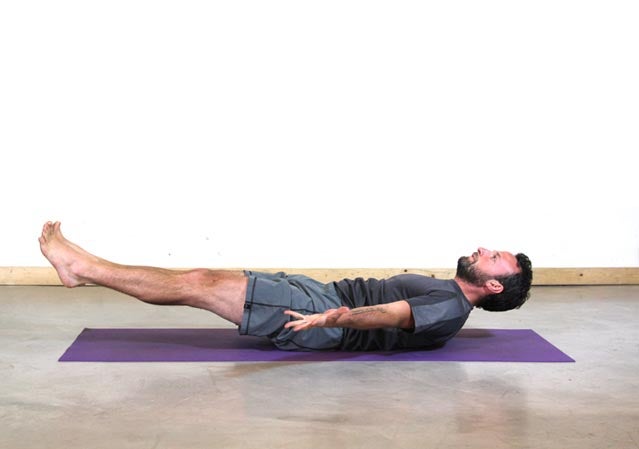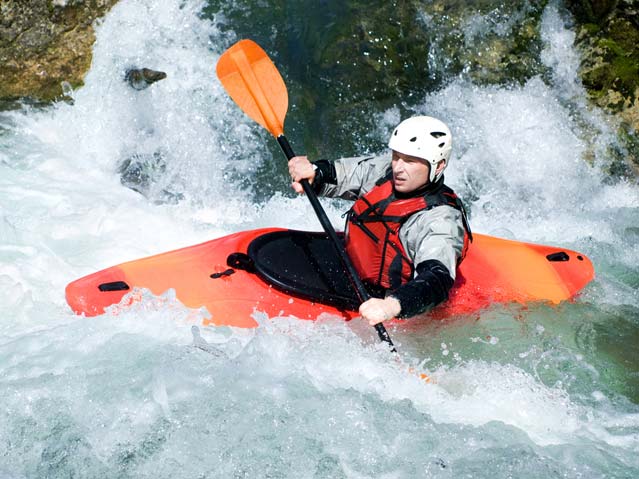The 4 Best Yoga Poses For Kayakers
Paddling—whether in flatwater or whitewater—can stiffen the shoulders from constant rotation, the obliques from twisting, and the hips from stabilizing the body in the kayak. Strengthening and opening those trouble spots can increase your endurance and efficiency.
The following four poses create space in the muscles and help develop postural integrity so that you can keep your form longer. And, thus, reach the real goal: spending more time out on the water.
Twisting Core Series:
Josh Schrei is a yoga teacher at Body in Santa Fe, NM, and an endurance athlete. He placed 10th among 40- to 49-year-old males in the Jemez 50K Trail Race last year. In October, he’s planning to do 3,000 sun salutations around South India’s sacred Arunachala mountain to raise money for Water.org.
The Best Yoga Poses For Kayakers: Down Dog Twist

THE MOVES:
1. Come into Downward-Facing Dog.
2. Bring the right hand to the outside of the left ankle.
3. Lengthen the right side of the body, relax the neck, and take the gaze up under the left side of the body.
4. Hold for 30 seconds.
5. Repeat on opposite side for 30 seconds.
THE REASON: Down Dog Twist lengthens and strengthens the entire side of the body—through the muscles of the side ribcage, and in the abdominal obliques—and sets up the necessary alignment for better kayaking posture.
The Best Yoga Poses For Kayakers: Navasana Twist

THE MOVES:
1. Sit on the mat with your legs straight out in front of you.
2. Inhale, lifting your legs straight up.
3. Bring your arms straight out on front of you toward your legs. Draw the shoulder blades back and lift the heart.
4. Sit on the sit bones, lifting up through the inner thighs and through the crown of the head.
5. Engage the core by drawing the navel toward the spine. Hold for 15 seconds.
6. Bring the hands together at the heart.
7. Twist toward your right first, your chest, arms and gaze to the right side of your body. Hold for 15 seconds.
8. Repeat on the opposite side, holding both steps (with arms extended and the twist for 15 seconds each).
THE REASON: Twisting Navasana strengthens the abdominal muscles and obliques to maximize stability in the kayak.
The Best Yoga Poses For Kayakers: Ardha Navasana

 Navasana
NavasanaTHE MOVES:
1. From step 5 in Navasana Twist (see photo in the sidebar), lower everything down until your arms, legs, and head are just a few inches off the mat.
2. Hold for 15 seconds.
3. Come up to Navasana (arms extended) and hold for 15 seconds.
4. Release down to Ardha Navasana for 15 seconds.
5. Continue repeating for as long as you like.
THE REASON: Twisting Navasana into Ardha Navasana is an oblique exercise that engages the core in a long twist while the hips are flexed—perfect for kayakers.
The Best Poses For Kayakers: Revolved Utkatasana

THE MOVES:
1. Do steps 1-6 on Utkatasana Bend.
2. Hold in Utkatasana for 15 seconds.
3. Bring the hands together at the heart. Inhale.
4. Exhale, twisting to the right. Bring your left triceps to the outside of your right thigh.
5. Hold here, breathing slowly, for 15 seconds. Make sure your hips still square over your feet and that they aren't jutting out to one side. At the bottom of each exhale, twist a little deeper.
6. Repeat on the opposite side, staying in Utkatasana for 15 seconds, and then twisting for 15 seconds.
THE REASON: Revolved Utkatasana develops the relationship between the deep flexion of the obliques and the opening of the hips to create more space in the lower side of the body.

